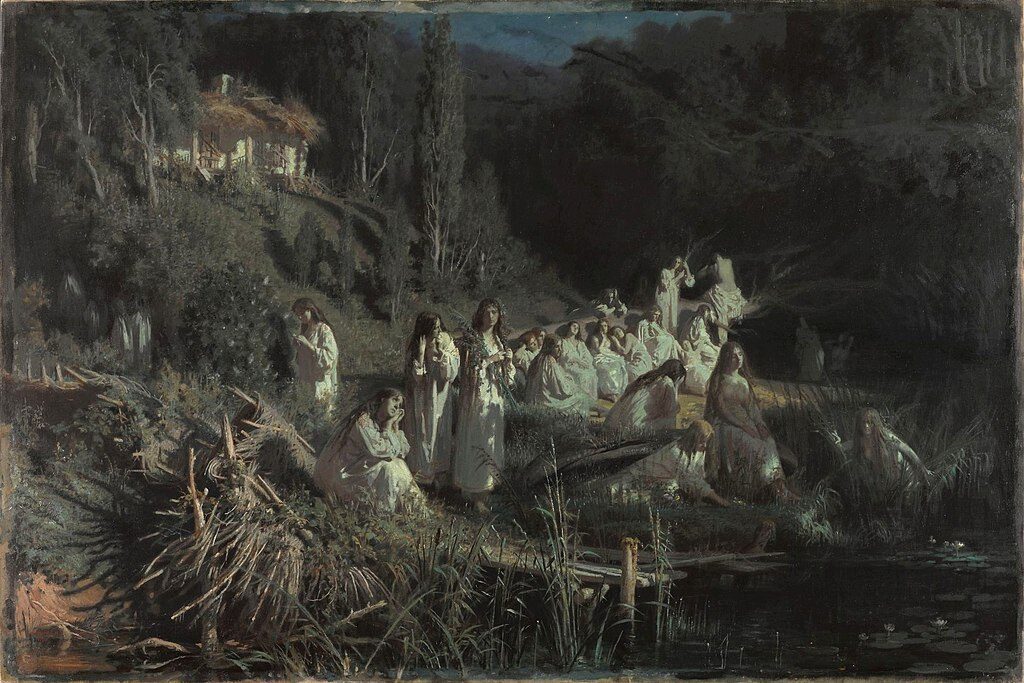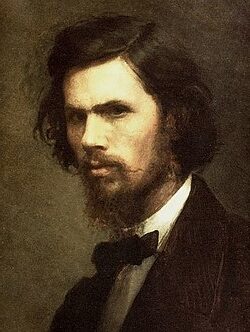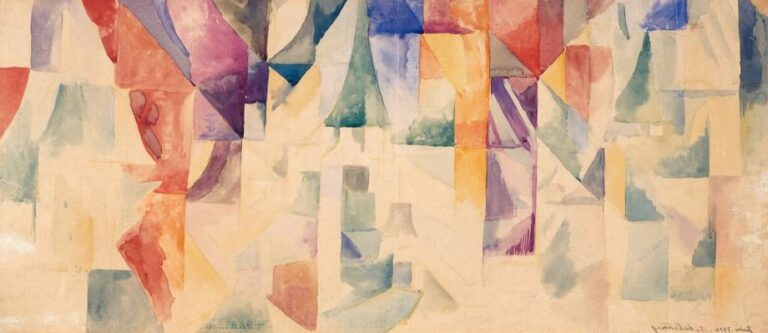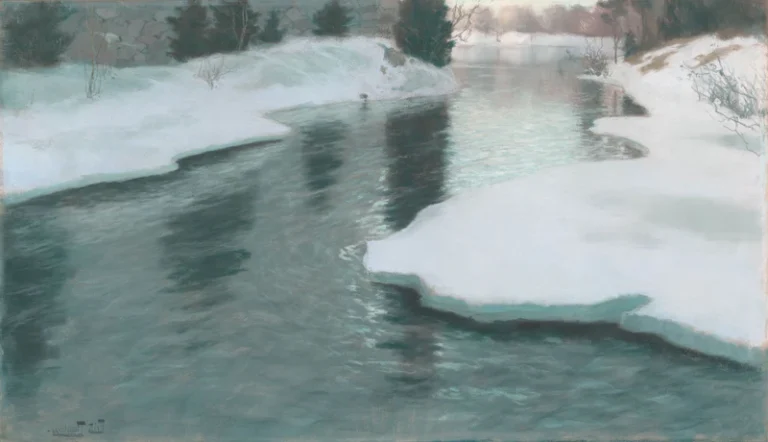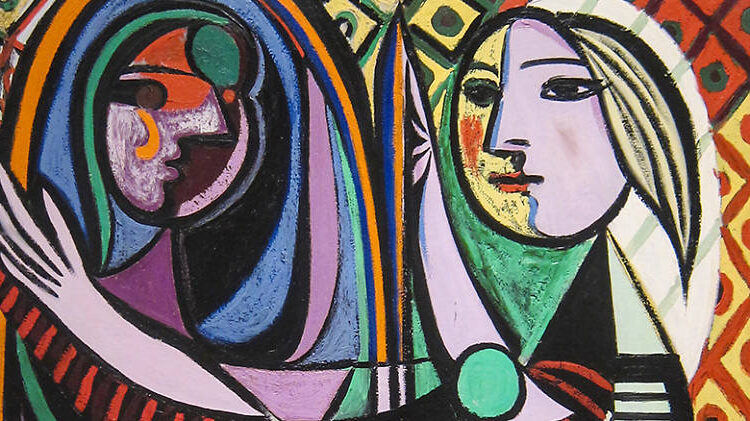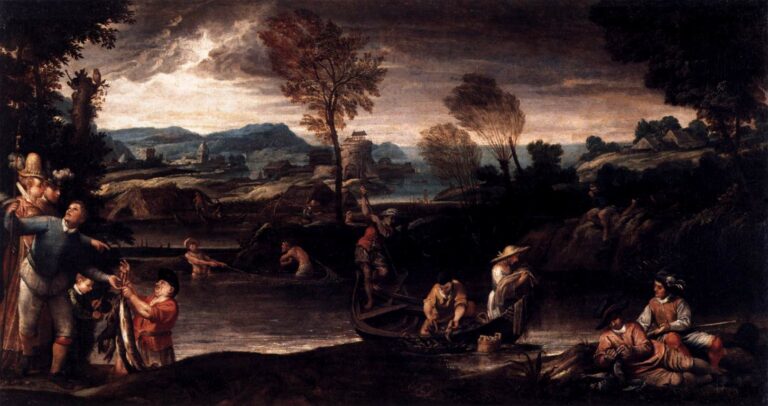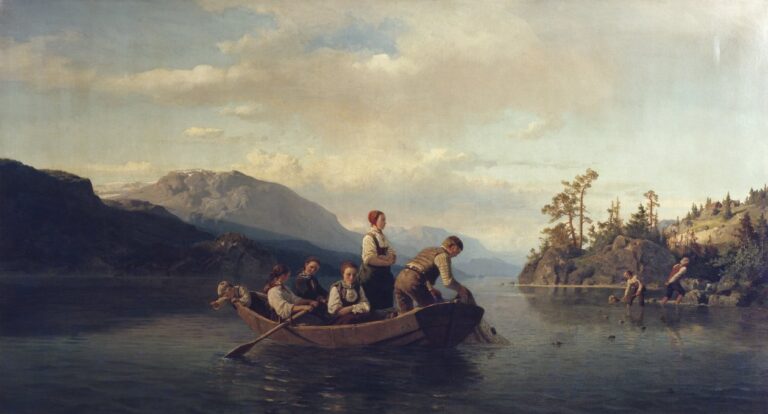Ivan Kramskoi: Painter of Russian Realism and Portrait Mastery
Born: 27 May [O.S. 8 June] 1837, Ostrogozhsk, Voronezh Governorate, Russia
Death: 5 April 1887, St. Petersburg, Russia
Mouvement artistique : Réalisme, Peredvizhniki
Nationalité : Russe
Teachers: Mikhail Tulinov and Alexey Markov
Institution: St. Petersburg Academy of Arts
Ivan Kramskoi: Painter of Russian Realism and Portrait Mastery
Vie et éducation précoces
Ivan Kramskoi’s journey from a small Russian town to becoming an influential artist was shaped by his humble beginnings and formal training. His natural talents emerged early, setting the foundation for his later contributions to Russian art.
Origin and Family
Ivan Nikolaevich Kramskoi was born on June 8, 1837, in Ostrogozhsk, a town in Voronezh Governorate, Russia. Coming from modest circumstances, Kramskoi showed artistic talent from a young age, teaching himself to draw as a child.

Christ in the Desert, 1872, by Ivan Kramskoy
By the age of fifteen, he had already begun his artistic journey, becoming an apprentice to an icon painter where he learned fundamental techniques.
His early exposure to religious art through icon painting influenced his later work. At sixteen, Kramskoi seized an opportunity to leave his small county town when he began working with a photographer from Kharkov. This experience broadened his visual understanding and provided practical skills in composition and portraiture.
Academy of Arts and Early Influences
In 1857, Kramskoi’s formal education began when he entered the Imperial Academy of Arts in St. Petersburg to study historical painting. During his six years at the Academy (1857-1863), he developed technical skills while forming strong opinions about artistic freedom and social responsibility.
The Academy’s rigid classical approach eventually conflicted with Kramskoi’s evolving artistic vision. This tension culminated in 1863 when he participated in what became known as “the revolt of fourteen,” when several students refused to follow the Academy’s traditional themes for their final examination.
This act of defiance led to his expulsion from the Academy but marked the beginning of his leadership role in Russian art circles. Despite this setback, the training he received provided a strong technical foundation that would support his later innovative work.
Professional Career and Artistic Contributions
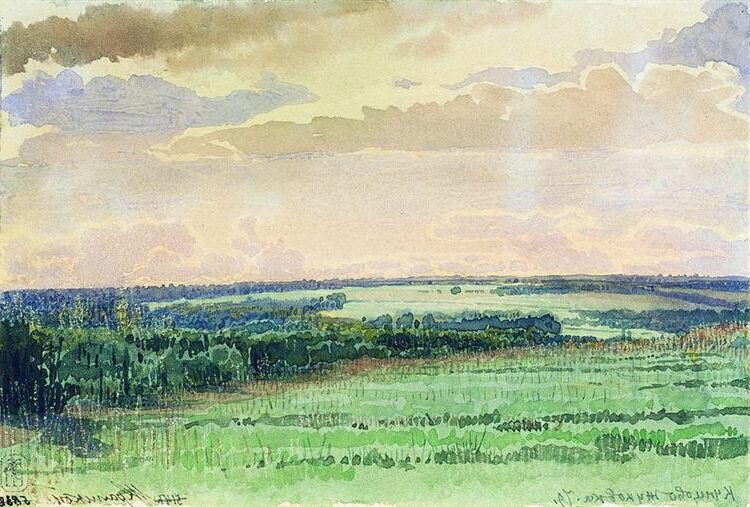
Zhukovka, 1879, by Ivan Kramskoy
Ivan Kramskoi’s career shaped Russian art through his leadership in the Peredvizhniki movement, masterful portraiture, influential art criticism, and commitment to réalisme. His work reflected his belief in art’s social responsibility and his l'excellence technique in capturing human character.
Peredvizhniki Movement
Kramskoi played a pivotal role in founding the Peredvizhniki (The Wanderers) movement in 1870. This group formed after he led fourteen students in protest against the rigid academic traditions of the St. Petersburg Academy of Arts. The “riot of fourteen” marked a turning point in Russian art history.
The Peredvizhniki rejected classical formalism in favor of depicting real Russian life. Under Kramskoi’s leadership, the group organized traveling exhibitions that brought art to common people across Russia.
His democratic vision transformed Russian art by promoting accessibility and social relevance. Kramskoi believed art should serve society by reflecting truth and inspiring progress.
Portraits and Influential Works
Kramskoi earned recognition as a master portrait artist. His technical precision and psychological insight produced remarkably lifelike images that revealed his subjects’ inner character.

Portrait of an Unknown Woman, 1883, by Ivan Kramskoy
His most famous work, “Portrait of an Unknown Woman” (1883), showcases his ability to create psychologically complex characters. The mysterious woman’s gaze continues to captivate viewers today.
“Christ in the Desert” (1872) represents another masterpiece, depicting Jesus contemplating his sacrifice. This oil on canvas work demonstrates Kramskoi’s skill in combining religious themes with human emotion.
His portraits of notable Russians including Leo Tolstoy, Pavel Tretyakov, and Nikolai Nekrasov preserved the likenesses of cultural figures while revealing their personalities through careful attention to expression and posture.
Role as an Art Critic
Beyond his painting, Kramskoi significantly influenced Russian art through his writing and criticism. His articulate defense of realist principles helped shape artistic discourse in 19th century Russia.
Kramskoi wrote extensively on art theory, advocating for work that communicated clear ideas and reflected social realities. His letters and essays promoted art that served a moral purpose rather than existing solely for aesthetic pleasure.
As a respected voice in artistic circles, he mentored younger artists and helped define standards for Russian national art. His critical thinking established frameworks for evaluating art based on both technical merit and social significance.
Contributions to Russian Realism
Kramskoi championed realism as the appropriate artistic approach for Russian society. He believed accurate depictions of vie quotidienne could foster social awareness and cultural identity.
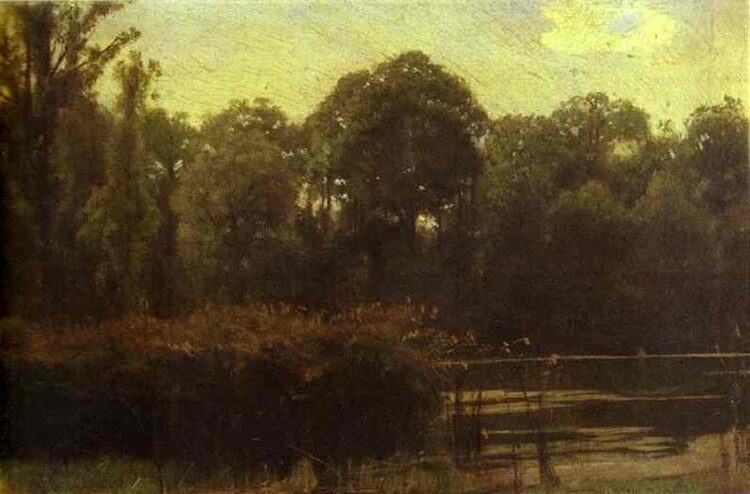
Pond, 1880, by Ivan Kramskoy
His paintings avoided romanticization, instead presenting subjects with dignity and honest detail. Whether portraying peasants or aristocrats, Kramskoi maintained the same commitment to représentation véridique.
Through both example and instruction, he established technical standards for realistic painting in Russia. His careful rendering of light, texture, and expression created a distinctive style that influenced generations of Russian artists.
Kramskoi’s legacy in Russian realism extends beyond technique to philosophy. He articulated a vision of art serving national development by honestly reflecting Russian conditions and character.
Héritage et influence
Ivan Kramskoi left a profound mark on Russian art through his portraits of famous figures and his leadership in the Peredvizhniki movement. His realistic approach and moral principles continue to influence artists and art education in Russia today.
Depiction of Notable Individuals
Kramskoi gained recognition for his remarkable portraits of prominent Russian cultural figures. His 1873 portrait of Leo Tolstoy captured the writer’s intense personality and intellectual depth, becoming one of the most iconic images of the literary giant.

Bois de Boulogne near Paris, 1876 by Ivan Kramskoy
He also painted other significant individuals including Taras Shevchenko, whose portrait emphasized the Ukrainian poet’s humble origins and dignity.
Many of Kramskoi’s finest portraits are now housed in the Galerie Tretyakov in Moscow, where they serve as important cultural documents of 19th century Russian society.
His portrait of Alexander III demonstrated his ability to portray authority while maintaining artistic integrity.
Influence on Russian Art
As a founder of the Peredvizhniki (“Wanderers”) movement, Kramskoi helped shift Russian art away from academic classicism toward social realism. His emphasis on moral purpose in art inspired generations of Russian painters.
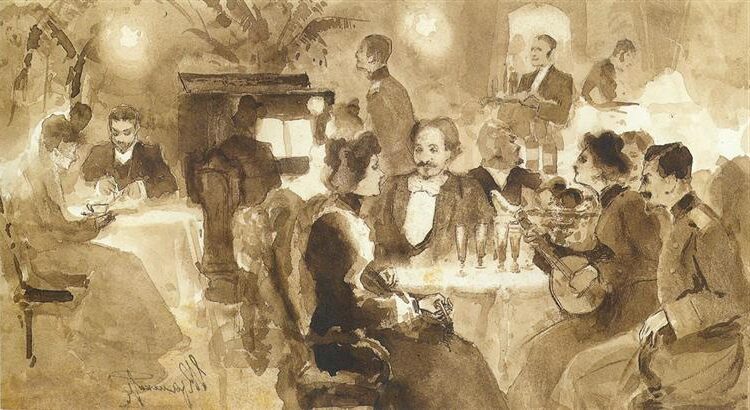
At the Restaurant, by Ivan Kramskoy
His artistic principles became fundamental to art education in both Moscow and St. Petersburg academies, where students studied his techniques and philosophical approach.
The “Wanderers” exhibitions, which Kramskoi helped organize, created a new model for displaying art outside official institutions, democratizing access to art across Russia.
His commitment to depicting ordinary people with dignity influenced the development of Soviet art in later decades.
Questions fréquemment posées
Ivan Kramskoi’s life and work inspire many questions from art enthusiasts and historians alike. His influential role in Russian art and his unique artistic vision continue to captivate audiences today.
What artistic movement is Ivan Kramskoi associated with?
Ivan Kramskoi is most closely associated with the Peredvizhniki movement, also known as the Wanderers or Itinerants. This was a group of Russian realist artists who broke away from the Imperial Academy of Arts in 1863.
Kramskoi was not just a member but an intellectual leader of this movement. The search results confirm his foundational role, noting he “was an intellectual leader of the art movement known as the Peredvizhniki.”
The Wanderers sought to create art that reflected Russian society and everyday life, rejecting academic conventions in favor of social realism.
What are some of the most celebrated works by Ivan Kramskoi?
Among Kramskoi’s most celebrated works is “Portrait of an Unknown Woman” (1883), which depicts a mysterious woman in a carriage and remains one of his most discussed paintings.
“Christ in the Desert” (1872) stands as another masterpiece, showing Jesus in a moment of deep contemplation and human vulnerability.
His portrait of Leo Tolstoy (1873) captures the famous writer’s intense character and penetrating gaze. Kramskoi also created notable portraits of Pavel Tretyakov, Nikolai Nekrasov, and Sergei Shishkin.
What characterizes Ivan Kramskoi’s style and technique in painting?
Kramskoi’s style is defined by psychological depth and realism. He excelled at capturing not just physical likeness but the inner emotional state of his subjects.
His technique featured precise draftsmanship and subtle use of color. The search results mention he “developed as a portraitist, using skills he developed in his photographic career,” which explains his attention to detail.
Kramskoi preferred natural poses and settings over idealized compositions. His backgrounds are often simple, allowing the subject’s face and expression to become the focus of attention.
What was Ivan Kramskoi’s contribution to Russian art history?
Kramskoi made significant contributions to Russian art both as a creator and an advocate. He helped establish a national school of painting that broke from European academic traditions.
His leadership in the Peredvizhniki movement promoted art that addressed social issues and celebrated Russian identity. As noted in the search results, he “played a huge role in the formation of the national school of painting.”
Kramskoi also contributed as an art critic and educator, shaping discussions about the purpose and direction of Russian art during a crucial period of cultural development.
Can you describe the significance of ‘Portrait of an Unknown Woman’ in Kramskoi’s oeuvre?
“Portrait of an Unknown Woman” represents Kramskoi’s ability to create psychologically complex characters. The painting’s ambiguity has generated endless speculation about the woman’s identity and social position.
The work demonstrates Kramskoi’s technical mastery in representing texture, from the fur-lined coat to the leather carriage upholstery. The contrast between the woman’s refined appearance and her enigmatic expression creates a tension that continues to intrigue viewers.
This painting has become iconic in Russian art, representing the intersection of technical skill and psychological insight that defined Kramskoi’s best work.
How has Ivan Kramskoi’s depiction of Jesus in his art been received and interpreted historically?
Kramskoi’s “Christ in the Desert” presents Jesus as deeply human. This is shown in a moment of inner struggle rather than divine triumph. This humanistic approach was considered revolutionary at the time.
The painting has been interpreted as reflecting Kramskoi’s own spiritual questioning. It also reflects the broader intellectual debates about religion in 19th-century Russia. The search results mention a connection between Kramskoi and Dostoevsky. Dostoevsky’s works often explored similar themes of faith and doubt.
Art historians have noted parallels between Kramskoi’s contemplative Christ and the complex religious characters in Russian literature of the period. His portrayal emphasized moral choice and human dignity. This is consistent with his belief in “the equalities of all people” mentioned in the search results.

